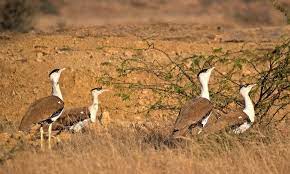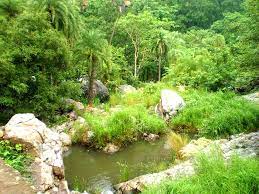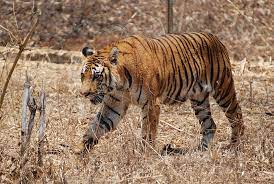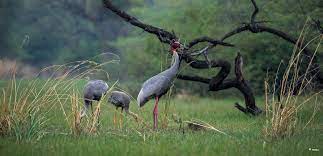मुकुंदरा हिल्स राष्ट्रीय उद्यान
इस अभ्यारण की स्थापना 1955 ईस्वी मे कोटा एंव चित्तौडगढ जिले के 199.55 वर्गकिमी क्षेत्र मे की गयी।
हाडौती के प्रकृति प्रेमी शासक मुकंद सिंह के नाम पर दर्रा से बदलकर मुकुदंरा हिल्स नाम रखा था इस अभ्यारण मे गागरोनगढ का दूर्ग , रावंता महल, बाण्डोली का शिव मंदिर, अबला मीणी का महल, भीम चौरी एंव मंदिरगढ के अवशेष स्थित है।
वन्य जीवो को पास से देखने के लिए रामसागर, झामरा आदि स्थानो पर अवलोकन स्तंम्भ बनाये गये है जिन्हे रियासती जमाने मे औदिया कहा जाता था।
यहाँ पर सांभर, नीलगाय, चीतल, हिरण, जंगली सुअर, एंव एलेक्जेन्ड्रि्या पेराकिट(गागरोनी तोते) प्रमुख वन्य जीव है
गागरोनी तोते को टुईया तोता भी कहा जाता है, जो मानव की बोली की हुबहू नकल करता है। इतिहासकारो ने इसे हीरामन तोता तथा हिन्दुओ का आकाश लोचन भी कहा है।
मुकुंदरा हिल्स अभ्यारण को राष्ट्रीय उद्यान का दर्जा 9 जनवरी 2012 को मिला।
राजस्थान की तीसरी बाघ परियोजना मुकुंदरा हिल्स मे अप्रैल 2013 मे प्रांरभ की गयी।
Mukundara Hills National Park
This sanctuary was established in 1955 AD in an area of 199.55 sq km of Kota and Chittorgarh district.
The pass was renamed Mukundara Hills after the nature lover ruler of Hadoti, Mukund Singh. In this sanctuary, the remains of Gagrongarh fort, Ravanta Mahal, Bandoli's Shiva temple, Abla Meeni's palace, Bhim Chauri and Mandirgarh are located.
Observation pillars have been made at places like Ramsagar, Jhamra etc., which were called Odia in the princely era, to see the wildlife from close by.
Here Sambar, Nilgai, Chital, Deer, Wild Boar, and Alexandria Parakeet (Gagaroni Parrot) are the main wildlife.
The Gagroni parrot is also called the Tuia parrot, which mimics the human speech. Historians have also called it Hiraman Parrot and Akash Lochan of Hindus.
Mukundra Hills Sanctuary got the status of National Park on 9 January 2012.
Rajasthan's third tiger project was started in Mukundra Hills in April 2013.















